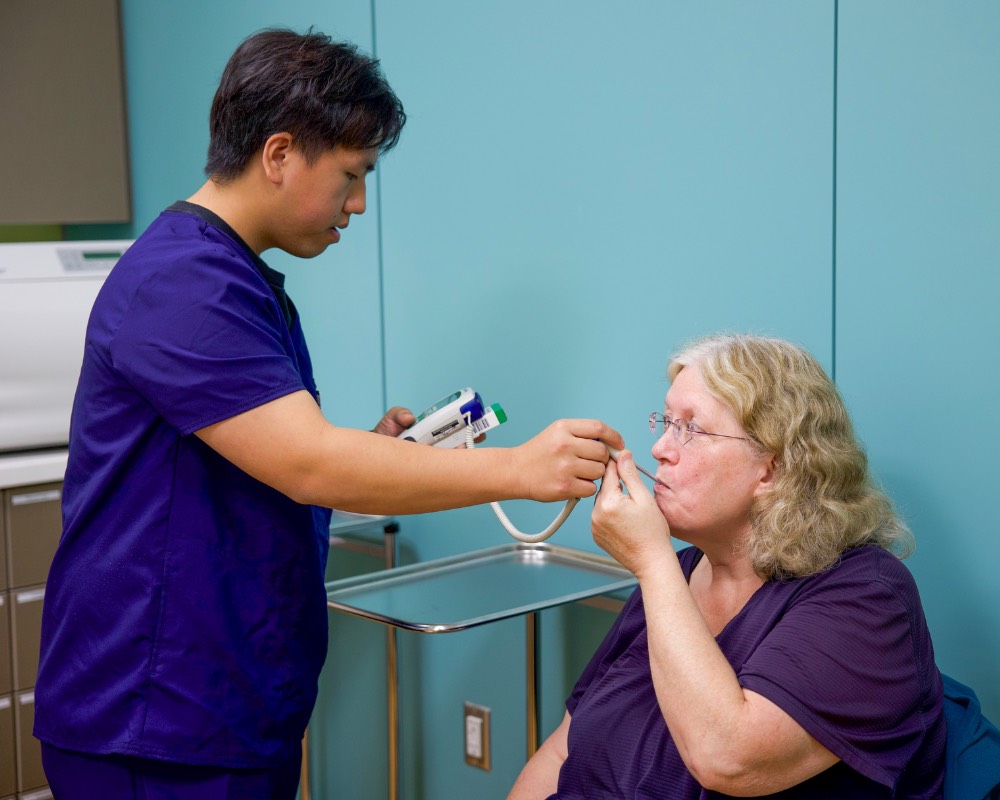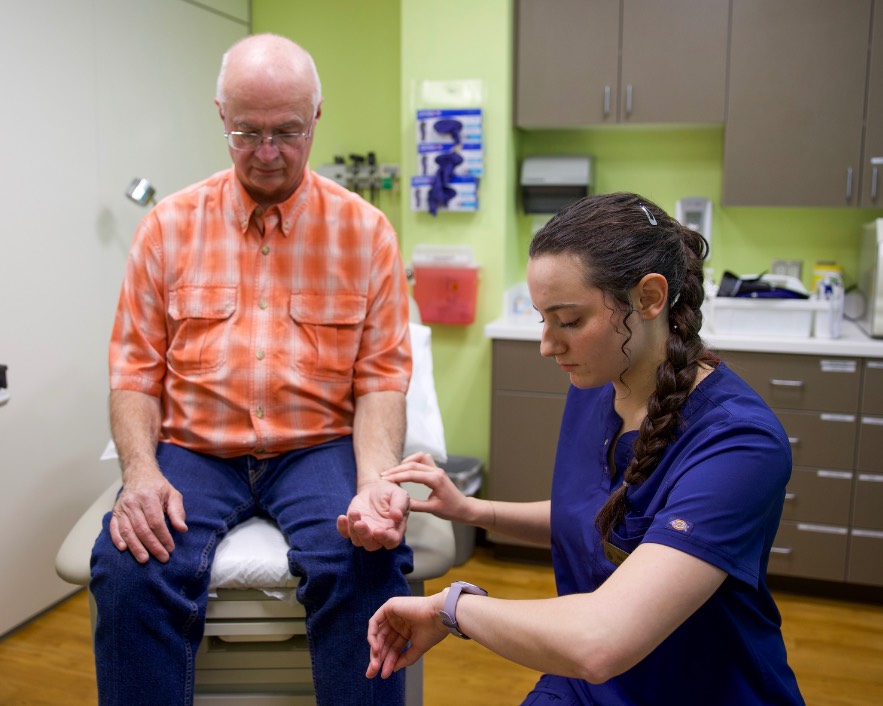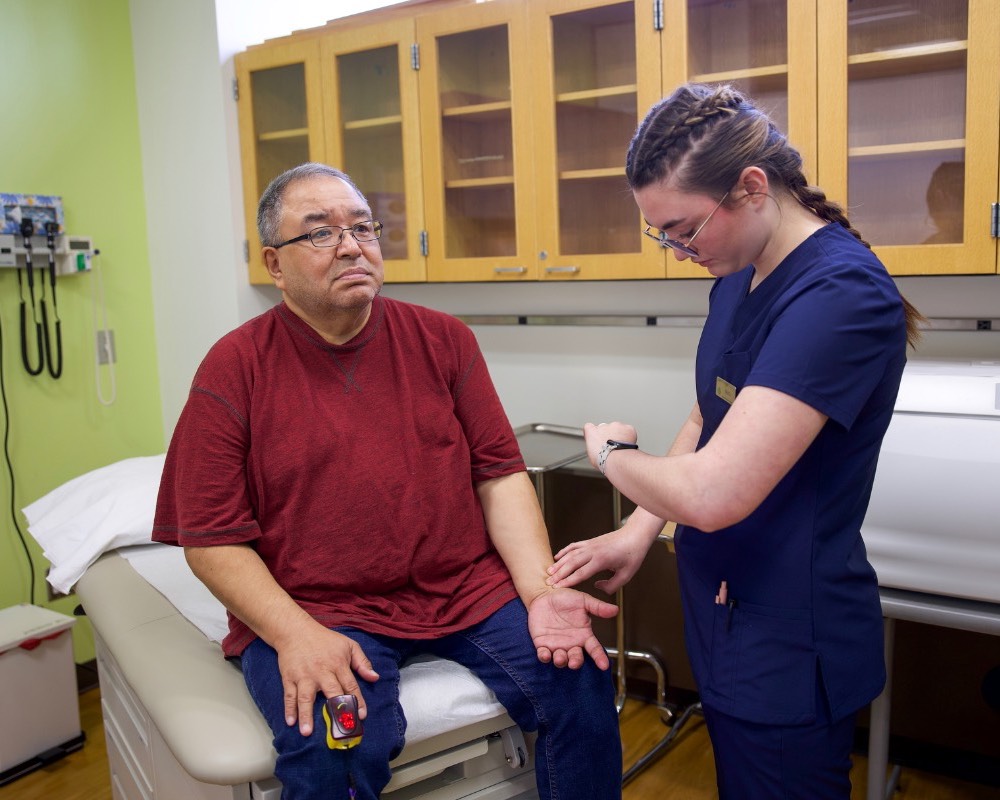Building Confidence Through Collaboration: UAA's medical assisting program and Simulation Center
by Jessica Degnan |
Students in the medical assisting (MA) program at the University of Alaska Anchorage (UAA) College of Health (COH) benefit from a unique collaboration with the Interprofessional Health Sciences Simulation Center. This partnership provides hands-on, simulated learning experiences designed to improve patient care, enhance confidence, and strengthen essential skills before students enter the workforce.

Since 2010, the Simulation Center has partnered with various COH programs to offer dynamic learning environments where students can practice their skills. Last year, Lisa Nash, MA Program Director and Simulation Center Committee Member, began to ask, “How can we better prepare our students to build confidence in their skills and strengthen patient relationships?” While clinical coordinators regularly praise her students for their technical abilities, they often note that students are nervous and take time to build rapport with patients in clinical settings during their practicum placements.
Typically, MA students practice with peers, which can lead to a level of comfort that hinders the development of communication skills needed for real-world patient interactions. Nash saw the Simulation Center as a solution to this gap: “Having the opportunity to practice with standardized patients gives students experience interacting with someone they’ve never met before, taking them out of their comfort zone, but in a safe space where they can build their confidence.” Students also receive feedback from the standardized patients, providing a patient’s perspective rather than one from a peer or instructor. These simulations go beyond simply meeting the competencies required by the Medical Assisting Education Review Board, ensuring students develop critical skills for patient care.

Sarah Hannon, Director of the Simulation Center, explains how tools like standardized patients, advanced video technology, realistic patient rooms, and high-fidelity manikins enhance students' learning experiences. "High-fidelity manikins have realistic responses and can interact somewhat with the participants in the simulation," says Hannon. “You’re able to hear their heart and lung sounds, even listen to their bowel tones, and feel pulses on them.” When standardized patients are unavailable, the Center uses technology to provide a similar simulation experience. Hannon believes that through these tools, "students have the opportunity to better prepare for interactions with strangers in a clinical environment, strengthening their communication skills to better care for and advocate for their patients—skills that truly transfer to real life."
The MA students have shared positive feedback about their first simulation experience, expressing a desire for more opportunities. One student noted, “Providing more simulations would help improve my communication skills, as there's a strong sense of familiarity with classmates that we don’t get with strangers.” Another said, “Next time, one thing I would do differently would be to be more confident rather than panicking about whether I’m doing things correctly.”

The Simulation Center will continue to collaborate with the MA program and has 3 more simulations planned for the Fall and Spring semesters, changing locations, standardized patients, and skills to continue challenging the students. The Simulation Center supports many other COH programs, like the School of Nursing, Social Work, Dietetics, Pharmacy, and more. Hannon shares, “Although we mainly focus on health-related programs, we plan to branch out including mock trial-type scenarios for the UAA Justice Center’s John E. Havelock Trial Simulation Courtroom.”
For more information about the UAA medical assisting program, visit the MA website. For more information about the UAA Interprofessional Health Sciences Simulation Center, visit the Simulation Center website.
Student Stories
Research
Events and Highlights
Alumni
In the News
Awards
Community
COVID-19
Diversity, Equity, and Inclusion









